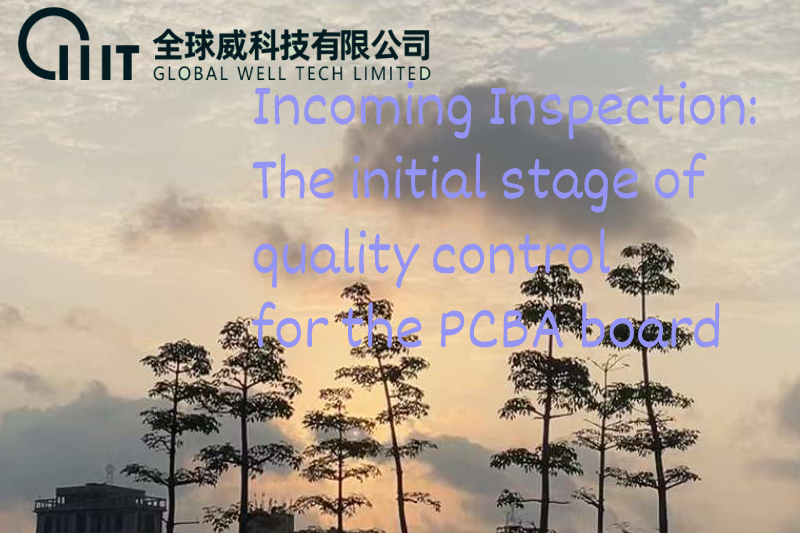PCBA testing
Incoming Inspection:The initial stage of quality control for the PCBA board
Incoming Inspection:The initial stage of quality control for the PCBA board
What is Incoming Material Inspection
If you have selected a turnkey service as your chosen item, then it is essential to exercise control over inspection from manufacturing to assembly. This entails conducting thorough inspections of materials received from suppliers such as inks, plate materials, components, and solder. The purpose is to ensure that they meet regulatory standards.This type of testing is vital as it provides significant benefits and convenience for the entire PCBA project.
Compliance with Supplier Standards: The project involves two types of materials—those purchased by customers themselves and those purchased from cooperative suppliers. It is imperative to ensure that all materials meet the functional requirements provided by the buyer to fully fulfill the terms of the purchase order and comply with the supplier’s standards.
Defect Prevention: Conducting material inspections before the project commences helps identify and resolve any faults, thus minimizing production failure, defective products, buyer complaints, recalls, and safety issues.
Time and Cost Savings: Identifying problems in advance reduces repurchasing time or refunding costs, which is essential for fast turnaround PCB assembly.
Improved Project Quality: The use of high-quality boards and plate materials tailored to meet the project’s demand can significantly improve the final product’s overall quality. Additionally, it builds buyer trust in the supplier.
Incoming Material Inspection Process
Step 1: Receive Materials
The delivery of materials from suppliers to the manufacturing workshop of FS Technology can take a significant amount of time. If you are responsible for sourcing the materials, it is crucial to carefully manage the turnaround time to prevent production delays. Alternatively, if you decide to partner with our company, we will proactively monitor the delivery process to ensure that all orders are being fulfilled according to our rigorous standards.
Step 2: Packaging and Label Verification
Upon receipt of materials, we conduct a thorough visual inspection to verify the accuracy of packaging and labeling, and to detect any damage or inferior components. If any issues are identified during this process, we promptly communicate with the customer to ensure a timely resolution.
For customers who require visual inspection of the finished PCBA package upon receipt, we recommend that they carefully consider the strength and durability of packaging materials when selecting a service provider. This will help to mitigate the risk of damage occurring during transportation.
Step 3: Visual Inspection
The bare board undergoes a comprehensive visual inspection to identify any physical damage to the surface, edges, or corners, such as scratches, cracks, or delamination. Our skilled engineers closely monitor the placement of components and board traces to ensure proper alignment.
Dimensional Inspection: To guarantee compliance with manufacturer specifications, we carefully measure the board’s dimensions against the provided characteristics and details.
Token Verification: We verify the accuracy and legibility of all markings on the board, including serial number, part number, and date code.
Soldermask Inspection: The protective soldermask layer on the board is inspected for peeling or cracks that could expose copper traces and compromise board functionality.
Copper Trace Inspection: The electrical connection of components relies on the integrity of the copper traces, which are inspected to ensure that they are not broken.
Plated Through Hole Inspection: Through holes are thoroughly checked to avoid clogging issues during PCB assembly.
Step 4: Electrical Testing
During this step, the board is powered and the output signals are measured to ensure they meet the required values, which helps identify any problems in the PCB design.
Insulation Testing: This test is used to detect whether there is any leakage between different parts of the PCB to ensure electrical isolation.
Capacitance Testing: Capacitance between each point is measured to ensure that the capacitance value meets project requirements.
Resistance Testing: The value of the resistor is measured to prevent loss if it is too large or burnout if it is too small.
Continuity Testing: Potential short circuits between copper traces are checked to ensure electrical connections are working properly.
Step 5: Documentation Review
In the final step of the incoming inspection process, we review the documentation provided by our suppliers, which includes certificates and test reports. This review ensures that the PCB meets the desired standards and features and complies with all necessary regulatory and quality standards. By carefully reviewing the documentation, we can minimize the risk of defects and malfunctions and ensure the highest level of quality for our customers.
0users like this.



